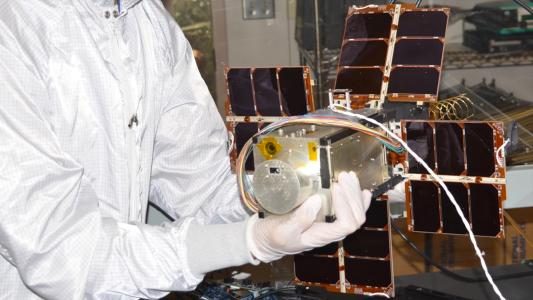An alliance of some of the world’s biggest tech and consulting companies has pledged to buy nearly $1 billion of permanent carbon removal between 2022 and 2030.
The project aims to establish guaranteed demand for emerging carbon removal technologies, which capture carbon dioxide from the atmosphere and store it underground.
The funds will be allocated by Frontier, a not-for-profit corporation owned by Stripe and funded by Stripe, Alphabet, Shopify, Meta, and McKinsey. Other funders will include businesses that use Stripe Climate — a service that lets companies automatically direct a fraction of their revenues toward the development of carbon capture technologies.
Why it matters: The $925 million pledge is a massive and unprecedented investment. For context, Stripe made headlines in 2019 when it pledged to buy $1 million in carbon-removal credits annually, and the company and its partners have since allocated more than $15 million toward carbon removal.
Frontier’s new commitment exceeds those previous investments by a factor of 61.
Beyond boosting an industry the UN recently called “essential” to achieving net-zero, the project could serve as a model for how to quickly turn science into beneficial technology.
The challenge: A startup in any emerging industry might have a great idea for a new product or technology, but without clear demand on the horizon it’s risky for them to build those ideas.
The key problem is that emerging technologies — whether it’s solar panels, vaccines, or carbon removal — are expensive. They need to scale up to become cheaper. That takes money.
The solution: Frontier wants to solve that problem by creating overnight demand for carbon removal startups. With the promise of $925 million in total funding, qualifying companies in the nascent carbon removal industry can more confidently invest in their businesses knowing that buyers are going to show up in the future to purchase removed carbon.
Advance market commitments: Frontier’s strategy is called an advance market commitment (AMC). It’s essentially a binding agreement between a group of companies or nations to buy a certain product at a certain price or price range. AMCs are generally used to correct incentives-based market failures in the private sector.
For example, in 2007 five nations and the Bill & Melinda Gates Foundation launched an AMC of $1.5 billion to incentivize the development of vaccines for pneumococcal disease, which is the world’s leading cause of pneumonia-related deaths.
The goal was to boost vaccine coverage in poorer nations where firms had little incentive to invest. The biggest problem wasn’t that biotech firms couldn’t develop effective vaccines, but rather that it didn’t make economic sense for them to expand supply. Low-income countries simply didn’t have the buying power.
By infusing the market with committed capital, the AMC helped fill the gap. According to a 2020 report, “the best estimates suggest that the introduction of [the pneumococcal vaccine] saved 700,000 lives at a highly favorable cost.”
AMCs and carbon removal: The 2007 pneumococcal vaccine initiative inspired Frontier’s AMC. Sure, vaccines and carbon removal are different markets. But Frontier notes that “they face similar challenges: uncertainty about long-term demand and unproven technologies. AMCs have the power to send a strong and immediate demand signal without picking winning technologies at the start.”
Not preselecting winners is key to the strategy. After all, carbon removal is a young industry and there are many methods of extracting carbon from the atmosphere and the oceans. Some companies capture carbon through lines of kelp that eventually fall to the ocean floor; some convert carbon dioxide into concrete alternatives; and others use geothermal energy and waste heat to capture and concentrate carbon, to name a few methods.
One of these methods might be more efficient than another. But by infusing money into the ecosystem and allowing a wide range of companies room to grow, new methods could emerge and existing methods could become more efficient over time.
That’s one reason why Frontier is funding both early- and late-stage carbon capture companies. For qualifying young companies, Frontier will provide funds upfront. But for more established companies, Frontier plans to offer “offtake agreements” — contracts under which Frontier will buy X amount of removed carbon at Y price, when and if that carbon is delivered.
Offtake agreements benefit large suppliers: The contract serves as proof that buyers are waiting on the sidelines, making lenders more likely to lend to suppliers who need money to scale up.
Frontier sees its $925 million pledge as a first step in getting the nascent carbon removal industry off the ground.
“While carbon removal has made significant progress over the past few years, it’s still not at all on track to get to the required scale,” Frontier wrote on its website. “As of 2021, less than 10,000 tons of carbon dioxide had been permanently removed from the atmosphere by new technologies—1 million times short of the annual scale needed.
“Carbon removal needs a bold assist. An AMC can give the industry the confidence to begin building, and to do so with urgency.”
We’d love to hear from you! If you have a comment about this article or if you have a tip for a future Freethink story, please email us at [email protected].






